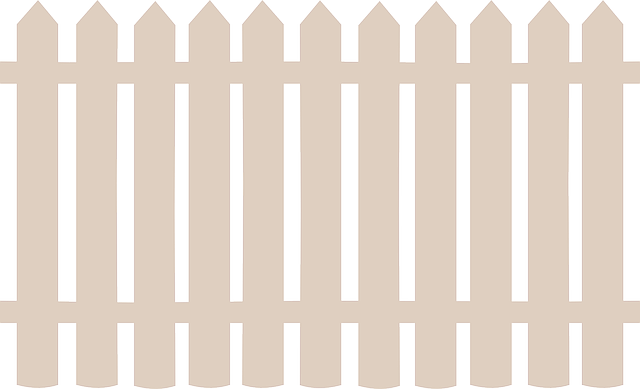In coastal regions, where harsh weather conditions and salty air pose unique challenges, durable wooden fencing is a popular and aesthetically pleasing solution. This article delves into the essential aspects of selecting and maintaining robust wood fences designed to withstand the test of time in these environments. From understanding specific requirements to choosing the ideal wood species, installation best practices, and maintenance tips, we provide a comprehensive guide for homeowners seeking long-lasting coastal fencing.
- Understanding Coastal Fence Requirements
- Advantages of Durable Wooden Fencing
- Choosing the Right Wood Species for Coastlines
- Installation Considerations for Coastal Environments
- Maintenance Tips for Longevity
Understanding Coastal Fence Requirements
When it comes to coastal areas, designing and installing fences require careful consideration due to unique environmental factors. The primary challenge is enduring constant exposure to salt air, extreme weather conditions like high winds and storms, and potential moisture issues. These elements demand a durable fencing material that can withstand corrosion, rot, and frequent movement. Wooden fences, in particular, must be treated appropriately to ensure longevity.
Choosing the right wood species is pivotal; options like treated cedar or pressure-treated pine are popular choices due to their inherent resistance to decay and insects. Additionally, proper sealing and maintenance routines are essential. Regular coats of high-quality exterior stains or paints can protect the fence from moisture and UV rays, ensuring it remains robust and visually appealing over time.
Advantages of Durable Wooden Fencing
Durable wooden fencing offers a natural and aesthetically pleasing solution for coastal areas, blending seamlessly with the surrounding environment. One of its key advantages is its ability to withstand harsh weather conditions, including strong winds and salt mist, which are common in coastal regions. This durability extends beyond just wind resistance; the wood is also resistant to moisture, rot, and insect damage, ensuring that it remains robust for years without requiring frequent replacement.
Moreover, wooden fencing can be tailored to fit various landscape designs, providing both privacy and security while enhancing the overall beauty of a property. Its versatility allows for creative styling, from traditional to modern aesthetics, making it an excellent choice for homeowners looking to create a unique outdoor space.
Choosing the Right Wood Species for Coastlines
When selecting wood for coastal fencing, understanding the local climate is key. Saltwater, strong winds, and varying temperature levels can take a toll on any material. Certain tree species are naturally more resistant to these elements, making them ideal choices for durable fencing. Hardwoods like cedar and redwood are well-known for their weather resistance and longevity. These woods have natural oils that repel water, preventing moisture absorption and the subsequent rot or decay often seen in softer woods.
Additionally, looking into treated wood options can offer even more protection. Pressure-treated lumber is immersed in a mixture of preservatives, enhancing its resistance to both insects and moisture. This treatment ensures the wood retains its integrity for years, making it an excellent choice for coastal environments where fencing needs to withstand harsh conditions consistently.
Installation Considerations for Coastal Environments
When installing wooden fencing in coastal areas, several unique considerations come into play due to the harsh marine environment. First and foremost, the choice of wood species is critical. Opting for naturally durable woods like cedar or redwood, known for their resistance to rot and pest damage, is essential. These woods have built-in defenses that allow them to withstand salt air and moisture better than other varieties.
Another crucial aspect is proper site preparation. Installing a robust fence requires a solid foundation. This often involves using concrete anchors or treated timbers to secure the posts firmly in place. Additionally, regular cleaning and maintenance are necessary to keep the fence in top condition. Regular washing with fresh water can help remove salt buildup, which could weaken the wood over time.
Maintenance Tips for Longevity
To ensure your durable wooden fence stands strong against the coastal elements, proper maintenance is key. Regular cleaning is essential to remove salt buildup and debris, preventing stains and damage. Use a soft-bristled brush or sponge and mild soap diluted with water; avoid harsh chemicals that could strip the finish. After cleaning, rinse thoroughly and dry completely to prevent water damage.
Painting or sealing your fence every couple of years will also protect it from weathering. Choose a weather-resistant formula suitable for exterior wood, ensuring an even coat. Regular inspection is vital; look for signs of rot, pest infestation, or loose boards, addressing issues promptly. Minor repairs like nail replacement or minor splinters can prevent major damage down the line.
